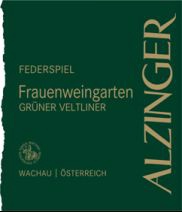
External search
Google (images)
Wine Advocate
Wine Spectator
Burghound
Wine-Searcher
Vintages
2018
2017
2016
2015
2014
2013
2012
2011
2010
2009
2008
2007
2005
2004
2001
2000
1999
1998
1992
N.V.
From this producer
Show all wines
All tasting notes
|
| Drinking Windows and Values |
| Drinking window: Drink between 2012 and 2019 (based on 9 user opinions) |
| Community Tasting History |
| Alzinger Producer website
Leo Alzinger is located in Unterloiben, just across the street from Knoll. Leo owns parcels in two of the great vineyards in this part of the river valley: Loibenberg and Steinertal. Loibenberg is a towering, terraced hillside, while the diminutive (5.5 hectare) Steinertal is hidden and maintains a cooler micro-climate. On the terraced vineyards of both sites, riesling is cultivated on the higher, more primary rock rich parcels while grüner veltliner is cultivated on the lower, silty, loess based parcels.
Harvest at Alzinger happens later than some of Leo’s neighbors in Unterloiben, something he attributes to old vines and the specific exposition of his parcels. The extra time on the vine doesn’t increase sugar levels, Leo says, but rather pushes physiological ripeness to greater balance. Alzinger crushes whole cluster with a short maceration, then allows the must to settle for 24 hours, dropping any green tannins out. Tasting the wines next to some of the other Wachau greats, it becomes apparent that elegance and pristine fruit is what Leo looks for in winemaking, rather than opulence. Alzinger’s wines are never forceful or assertive; they are instead amazingly sanguine and calmly transparent. Terry says “You wouldn’t be surprised if the cellar master was the Dali Lama”.
Vineyard area: 11 hectares
Top sites: Loibenberg, Steinertal, Liebenberg
Soil types: Eroded primary rock, sandy soils with loam
Grape varieties: 55% Grüner Veltliner, 40% Riesling, 5% ChardonnayGrüner VeltlinerGrüner Veltliner, (or Gruener Veltliner when spelled without the Umlaut) is an indigenous white grape from Austria. Grüner Veltliner accounts for nearly 30% of the country's plantings making it the most widely grown grape in the country.
Grüner Veltliner is grown throughout the wine growing areas of Austria, but is most prominent in the area of Neiderösterrich (Lower Austria.) Grüner Veltliner is an ancient descendant of the white grape, Traminer, its other parent remains unknown.
Grüner Veltliner is a DAC classified wine in the wine growing areas of the Weinvertel DAC (District Appellation Control), Kremstal DAC, Kamptal DAC, Traisental DAC and Lethaiberg DAC. Other important growing areas include the areas of Wachau, Vienna, and Wagram despite the fact these regions are not currently recognized under the DAC system. Grüner Veltliner wines typically 12.5% abv, but can have more or less dependent on the region, the year and winemaker's personal style.
Grüner Veltliner is most commonly known as a bone-dry, highly acidic grape with distinct aromas and flavors of white pepper, green apple and citrus. While this is the typical flavor profile for young Grüner Veltliner wines, it is important to recognize that Grüner Veltliner is a very expressive grape and will show different dependent upon the region in which it is grown. For example, the Weinvertel will demonstrate high-acid, white pepper and green apple as noted, but a Grüner Veltliner from the Wachau is likely to show characteristics more typical of that of Riesling -richer, deeper fruit and a touch of stone; still other regions display different expressions that can include tropical notes, stone fruits, flint, smoke and more.
Though many Grüner Veltliner wines are made for immediate consumption, Grüner Veltliner can have incredible aging potential and can often be compared with white Burgundy, after all they are grown at roughly the same latitude. Grüner Veltliner made for aging will likely be slightly higher in alcohol and contain later-harvested grapes.
Although Grüner Veltliner is typically vinified dry, it may also be used on its own or as part of a cuvée to make sweeter styles such as Beerenauslese, Trokenbeeranauslese, Ruster Ausbruch (in the town of Rust only) or Eiswein.
Grüner Veltliner is an average-ripening grape and is typically harvested in October in Austria though weather conditions can force vine growers to harvest early.
Gruner Veltliner may be found in other areas of the world under the name of Weißgipfler, Grünmuskateller (AT), Veltlínské zelené (CZ), Zöld veltelini (HU), Veltlínske zelené (SK) or Zeleni veltlinec (SL).Federspiel Wikipedia about Federspiel (german)Austria Wein aus Österreich (Österreichischen Weinmarketinggesellschaft) | Austrian Wine Classifications (Winemonger.com)Niederösterreich Weinstraße Niederösterreich
Lower Austria Wine Region
Lower Austria isn't "southern" Austria, but rather northeastern. It derives its name from its downriver location on the Danube River, which flows from west to east.Wachau Official tourism website
on weinlagen-info |
|




